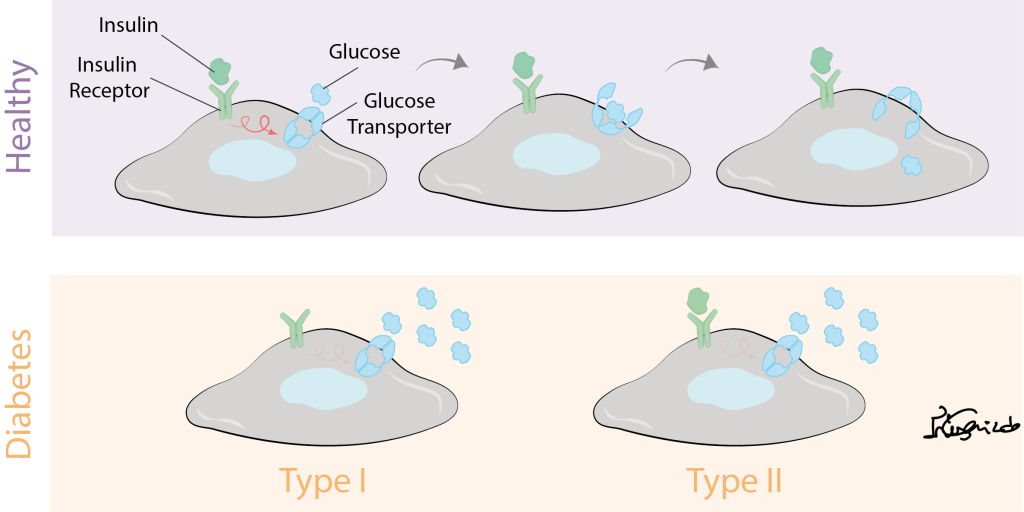Today’s post is gonna have a sweet flavor. Because 103 years ago, on July 27th, a huge step in the treatment of diabetes was taken: the discovery of insulin. Using insulin is part of the daily life of many people who suffer from diabetes. But what really is insulin? And how does it play such an important role in treating diabetes?
Diabetes has been a known disease for thousands of years. It is known to be related to elevated levels of sugar in the blood. Historically, it has been documented as “honey urine” (a weird combination of words, I know). Diabetes patients’ urine was known to attract ants, due to their increased sugar levels.
Until not very long ago, the only way to deal with it involved changes in diet: reducing the consumption of sugars and carbohydrates. But, in 1921, Canadian scientists Frederick Banting and Charles Best discovered that insulin injections treated diabetes symptoms.
This discovery was so successful that, the year after, a 14-year-old boy became the first person to be treated for diabetes with insulin injection.
But what really is insulin and how is it related to diabetes?
So, let’s start from the beginning: When we eat or drink, glucose is absorbed into the bloodstream during digestion. However, for it to be used to produce energy, it needs to go into our cells, so that they can process it.
Insulin is a hormone that, under normal conditions, is produced in the pancreas. Its role is to precisely regulate glucose (sugar) levels in the blood, by mediating its intake into the cells.
It acts as a kind of switch that allows the transporters that exist on the surface of our cells to open and allow glucose to move inside.
Without insulin, however, glucose will be floating around in the blood, never reaching our cells because its “doors” will never open.

In cases like this, when the pancreas does not produce enough insulin (or, in some other cases, the body is not able to successfully use the insulin), we have a case of diabetes.
Some of the biggest issues regarding diabetes have to do with the elevated levels of glucose in the blood. This accumulated build-up of sugar, over time, may lead to serious damage in the kidneys, the nerves (which can lead to typical diabetes problems in the feet), the eyes, in the heart… which can ultimately result in death.
And this is why the injection of insulin is so important in diabetes. In the absence of our own insulin produced by our pancreas, the injection of external insulin (which has had different origins: from isolation from other animals’ pancreas to mass production by bacteria) bypasses that problem, therefore opening the glucose transporters on the surface of our cells, allowing the sugar in our blood to reach its due destination and not stay around causing life-threatening troubles.
It is however important to mention that, although it can have genetic origins, diabetes can be prevented by practicing exercise, maintaining a good diet, and having a healthy lifestyle. You can extend your knowledge and read more about diabetes here.


Thinker Pedia
Thinker Pedia I appreciate you sharing this blog post. Thanks Again. Cool.
Blue Techker
Blue Techker Hi there to all, for the reason that I am genuinely keen of reading this website’s post to be updated on a regular basis. It carries pleasant stuff.
pheonix real estate
Real Estate I very delighted to find this internet site on bing, just what I was searching for as well saved to fav